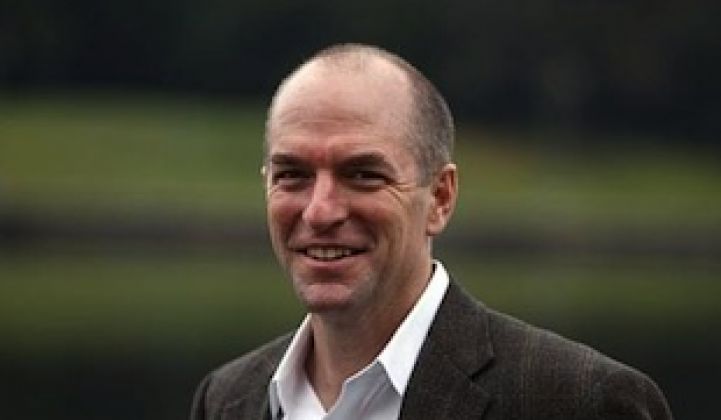John Woolard, the CEO of high-profile concentrated solar power (CSP) developer BrightSource Energy, is resigning after helping found the company in 2006, as reported by Dana Hull in the Mercury News.
Woolard's resignation comes on the heels of a BrightSource press release that sees the company "evolving from being a U.S. project developer to becoming a global technology provider that also offers development support as well as engineering and operational services."
That's tough language to decode, but forgoing project development to become a "technology provider" is reminiscent of a startup's transition to a licensing model -- usually the first step before a startup's slow demise.
CEOs of aspirational startups backed by hundreds of millions of venture capital and project finance dollars typically don't leave without a compellingly good reason or without being fired.
"Seven years is a fairly long time," Woolard said in an interview with the Mercury News. "I've thought a lot about this. To me, getting Ivanpah done and up and running, and building the whole company up and creating a platform to grow from was cycle one. When I looked at the next cycle, there's a big commitment and a lot to do, and I've got little kids."
These are valid reasons to leave the CEO post, just not typical in Silicon Valley.
In April of last year, BrightSource pulled its IPO because of market reasons. Institutional investors were not comfortable with competition from the plunging price of photovoltaic solar and for a variety of other potential risks.
Last month we reported that BrightSource's giant Ivanpah solar thermal project in the Mojave Desert was 92 percent complete. The 377-megawatt project consists of three 459-foot-tall towers encircled by arrays of garage-door-sized heliostats. A total of 173,500 computer-controlled heliostats will eventually reflect the sun onto the receiving towers, heating water to create steam that will drive turbines that produce electricity. Future projects from BrightSource will include thermal energy storage as per Solar Reserve's projects.
Two BrightSource Energy projects have recently been shelved due to permitting issues. BSE terminated power purchase agreements (PPAs) for the proposed Hidden Hills and Rio Mesa CSP solar power tower projects.
Stephan Dolezalek, one of the initial investors in BSE and cleantech lead at VantagePoint Capital Partners (Vantage Point is the majority owner of BSE), suggested in an earlier interview that had Woolard known the challenges that lay ahead of him when he took the job, he might have reconsidered. In addition to convincing venture capitalists to throw in a few hundred million dollars, Woolard has had to raise billions in project finance from the likes of Goldman Sachs, CitiCorp, NRG, and Abengoa, while enduring hostile opposition from environmentalists, tortoises, and the Los Angeles Times. Dolezalek called Woolard one of the brightest minds and hardest workers in the cleantech world.
Woolard said, "The problem we're trying to solve is [... how to] decarbonize the power supply and maintain system reliability at the lowest total cost to customers."
Woolard noted that each picture-window-sized heliostat mirror, installed at the rate of one per minute at the $2.2 billion Ivanpah project, is capable of providing power to approximately one home, without the "hidden integration costs to the consumer" that come with wind and solar.
H. David Ramm, Executive Chairman of BrightSource, will take over as CEO until a replacement is located. Woolard will remain on BrightSource's board.
Sometimes an executive transition like this is just business as usual. More often, it's a sign of further turmoil ahead.



